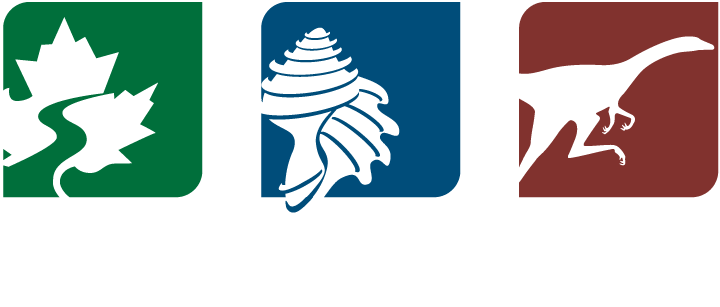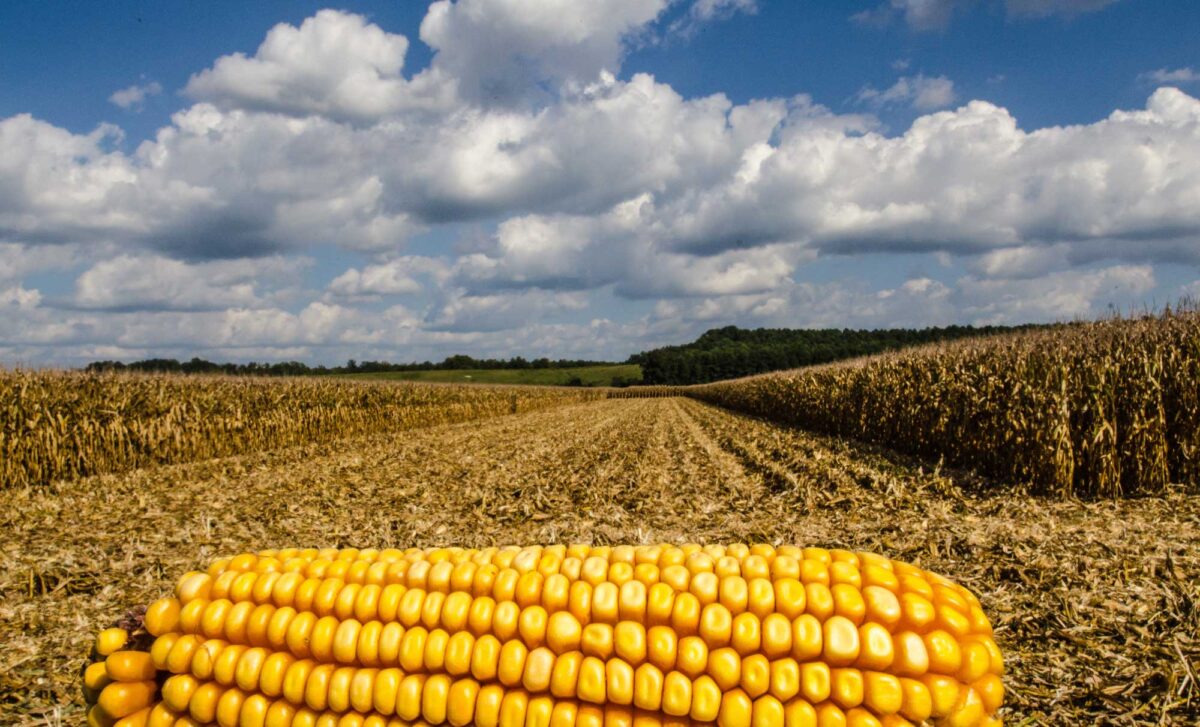Page snapshot: Quick facts about maize: What it is, where it came from, how it is used, how it is grown, and where it is grown.
Topics covered on this page: What is maize?; Where did maize come from?; Is maize corn?; How is maize used?; How is maize grown?; Where is maize grown?; Resources.
Credits: Funded by the National Science Foundation. Any opinions, findings, and conclusions or recommendations expressed in this material are those of the author(s) and do not necessarily reflect the views of the National Science Foundation. This page includes content from the Teacher-Friendly Guide to the Evolution Maize (T. M. Fulton, C. S. Buckler, and R. A. Kissel, 2011). Additional content and revisions by Elizabeth J. Hermsen (2023).
Updates: Page last updated February 23, 2023.
Image above: A maize field with an ear of maize in the foreground, Virginia, U.S.A., 2013. USDA photo by Lance Cheung (flickr, public domain).
What is maize?
Maize (Zea mays) is a tropical grass that is grown primarily for grain and is used as a staple food in many parts of the world. It produces relatively large, soft grains, called kernels that are usually yellow in color, although some varieties come in other colors, like blue, red, and multicolored.
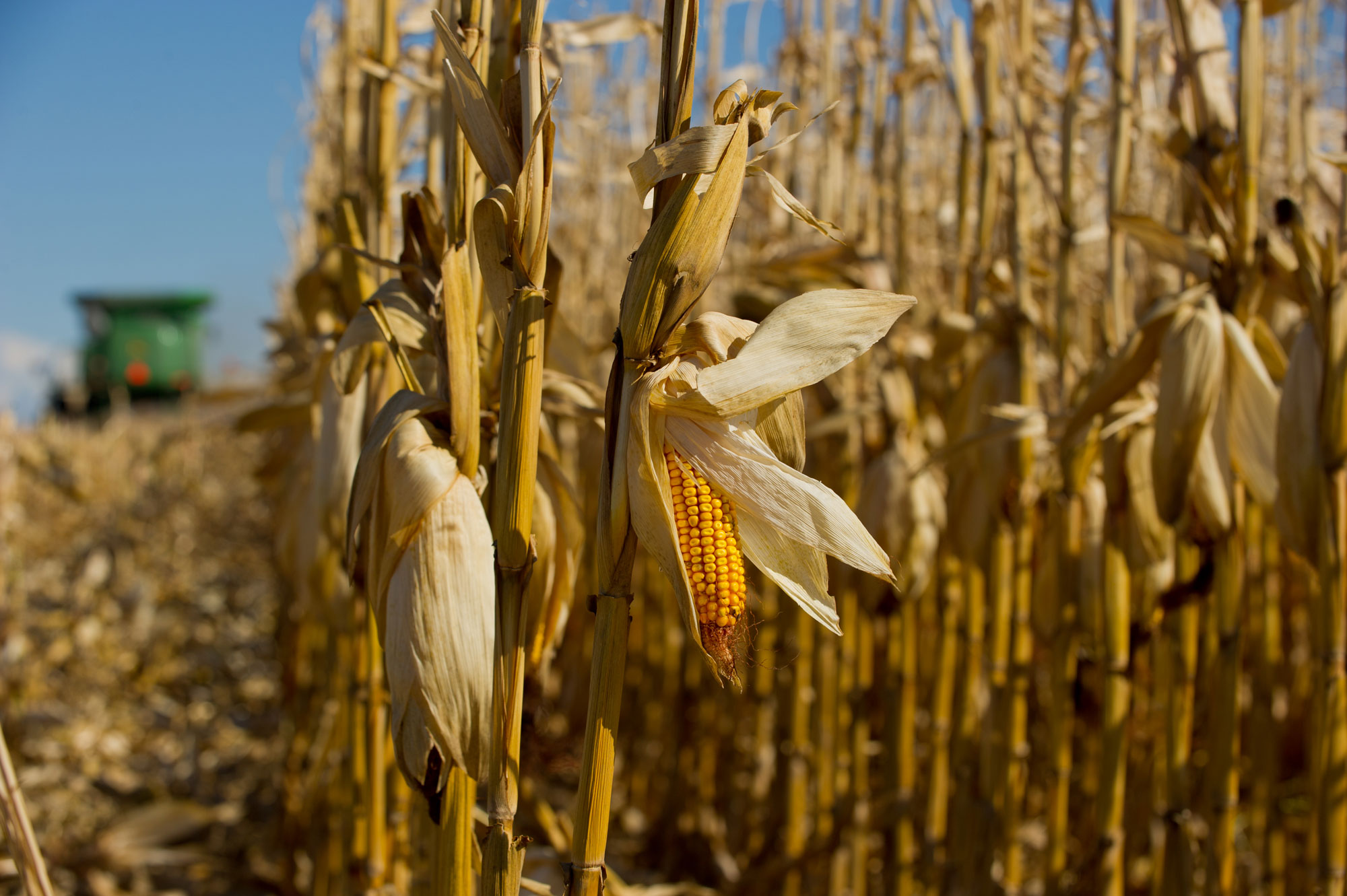
Maize (Zea mays) harvest. Photo by United Soybean Board (flickr, Creative Commons Attribution 2.0 Generic license, image resized).
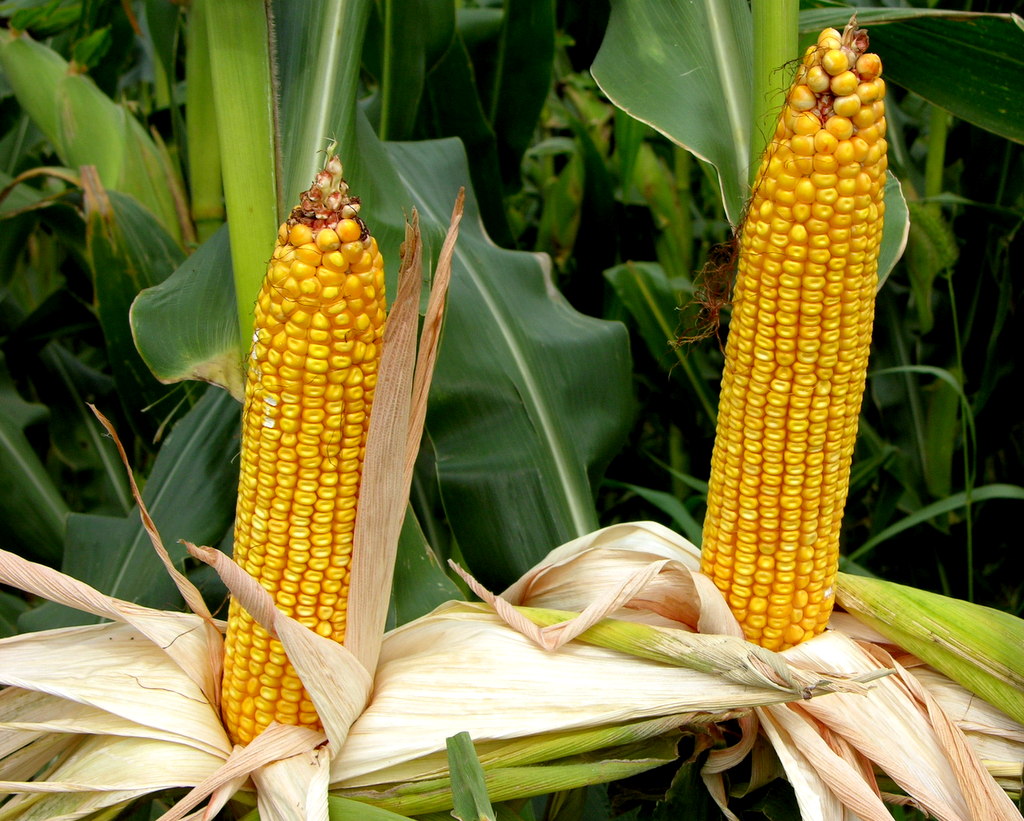
Ears of maize (Zea mays), Missouri, U.S.A. "Corn ears," photo by Phil Warren (flickr, Creative Commons Attribution 2.0 Generic license).
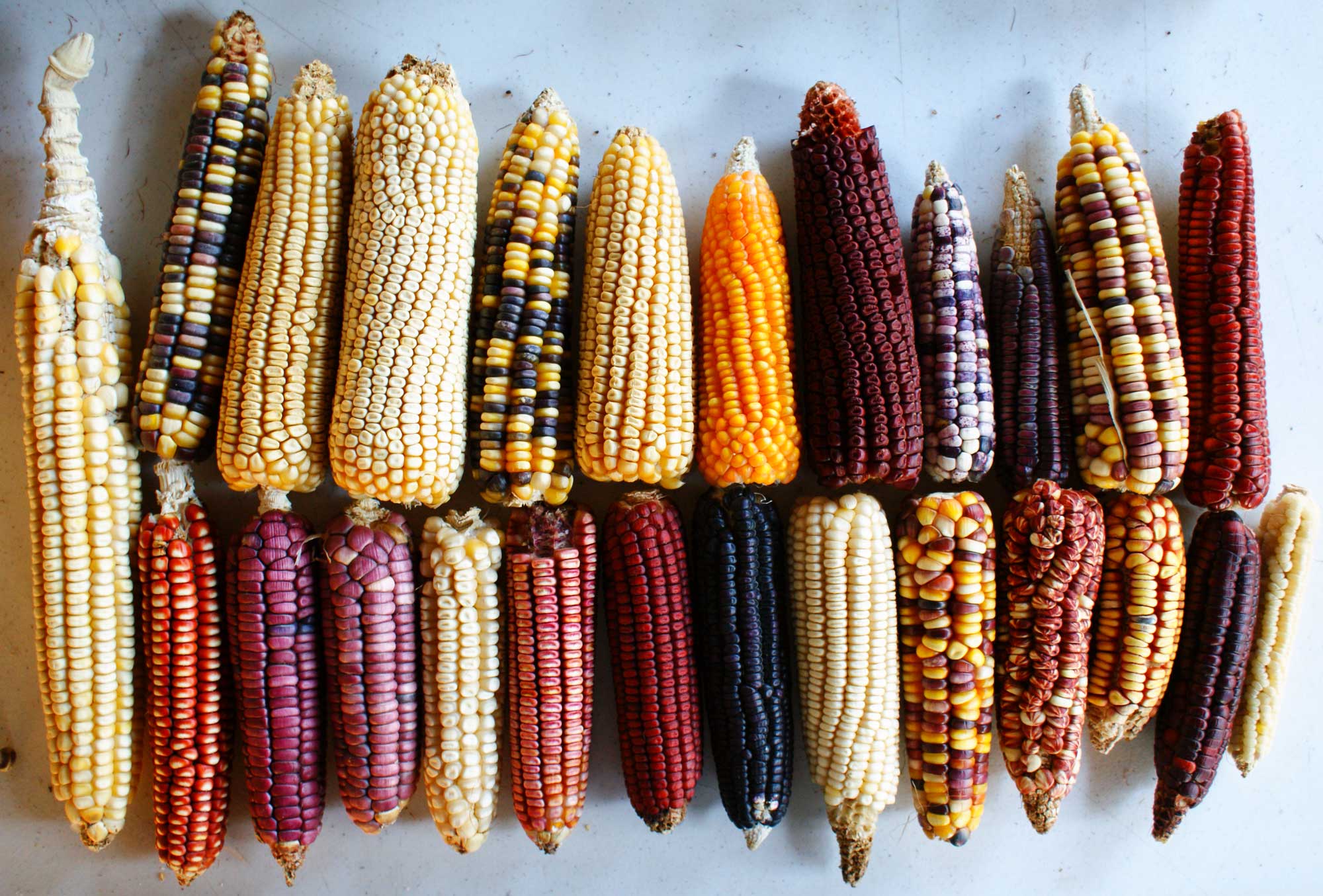
Ears of different corn varieties from Mexico. Photo by Feria de Productores on flickr (Creative Commons Attribution 2.0 Generic license, image cropped and resized).
Where did maize come from?
Based on archaeological evidence, scientists think that maize was first domesticated around 10,000 years ago in the Balsas Valley of Mexico, which is southwest of modern-day Mexico City. The wild ancestors of maize were plants known as teosinte (Zea spp.), which had branching stems, small ears, and hard kernels. Over the thousands of years since its domestication, humans have selected maize to have more kernels, larger ears with more rows of kernels, and exposed (soft) kernels. Modern maize plants have been improved through selective breeding, and some varieties are genetically engineered using genes from bacteria to make them pest- and herbicide-resistant.
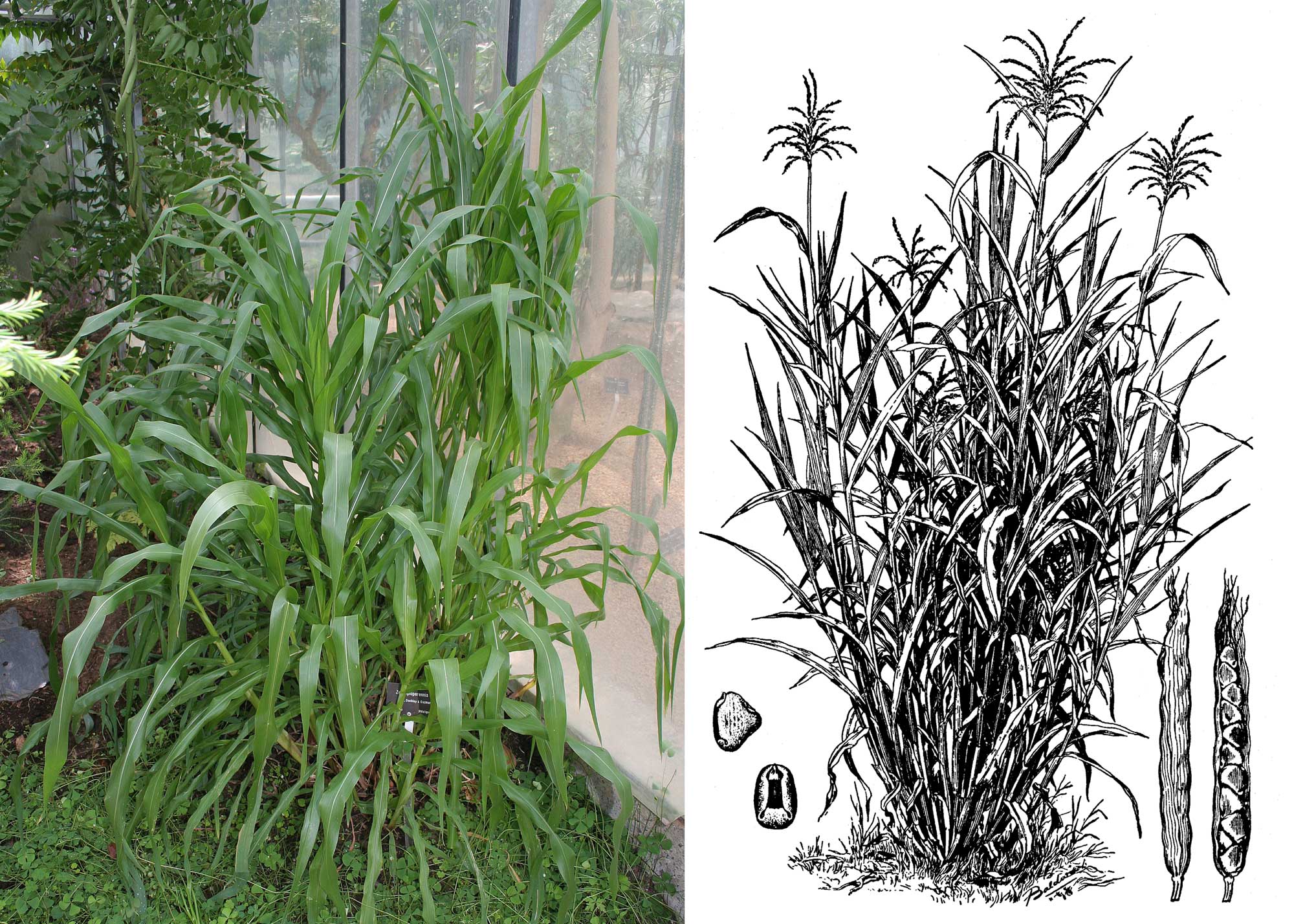
Teosinte plants. Left: Zea diploperennis. Right: Zea mays subspecies mexicana. Photo credits: Zea diploperennis by Jeffdelonge (Wikimedia Commons, Creative Commons Attribution-ShareAlike Unported license, image cropped and resized); Zea mays subspecies mexicana (Wikimedia Commons, via USDA PLANTS, public domain).
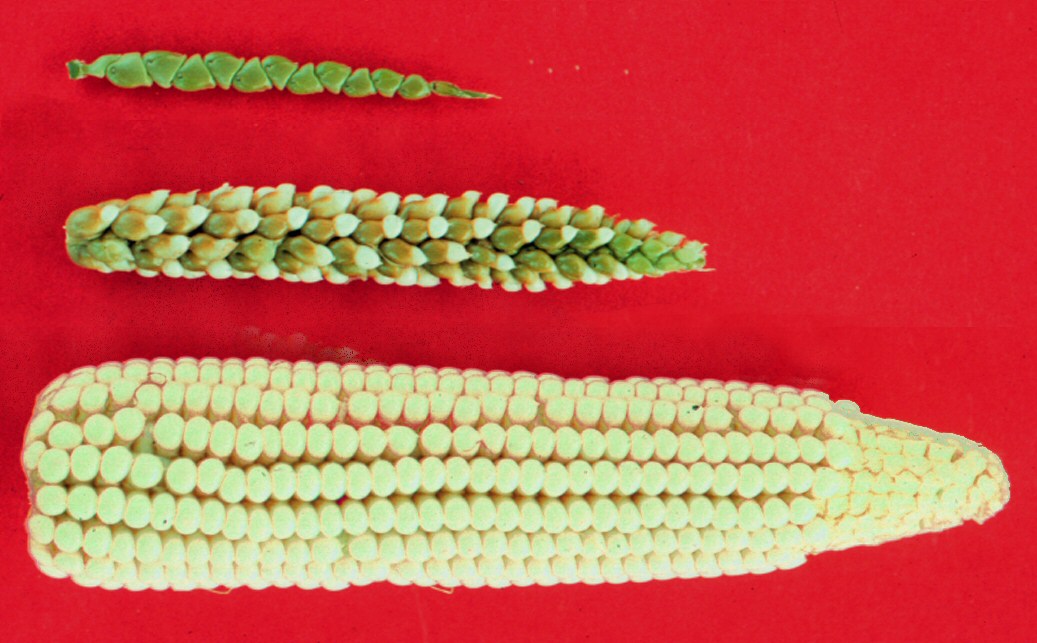
Ears of teosinte (top), maize (bottom), and a maize-teosinte hybrid (center). Photo by John Doebley (Wikimedia Commons, Creative Commons Attribution 3.0 Unported license).
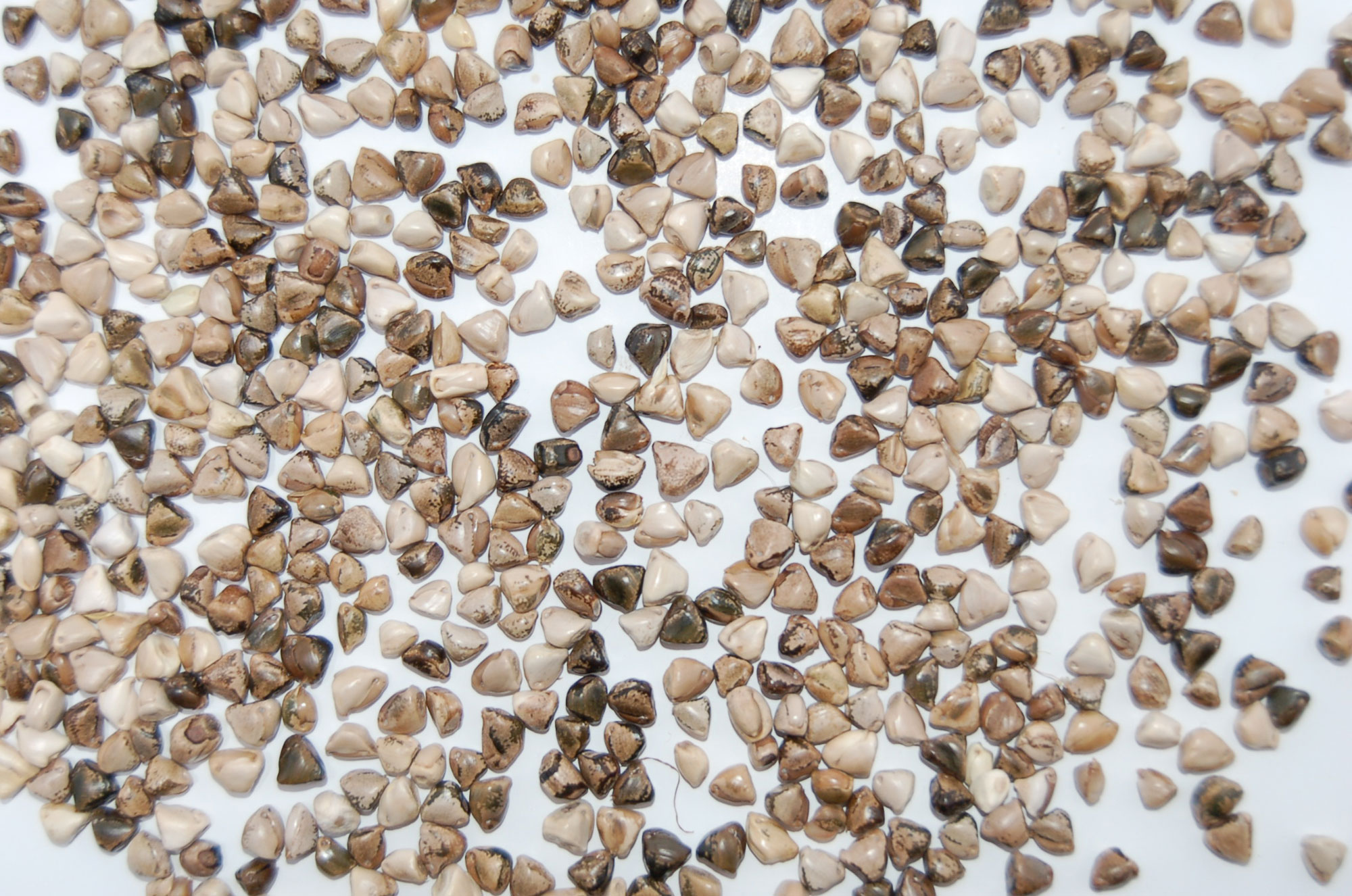
Teosinte kernels. Photo by Michael Chauvet (Wikimedia Commons, Creative Commons Attribution-ShareAlike 3.0 Unported license, image resized).
Is maize corn?
The term “maize” comes to English through Spanish (maíz), and ultimately originates from the word mahiz of the now-extinct Taíno language (the language of the Taíno people, one of the Indigenous Peoples of the Caribbean islands). The first known use of the word "maize" was in the 1500s, after European explorers came to the Americas and first encountered the plant.
Originally, the term “corn” was a general term for any grain in English. In the U.S., Australia, and Canada, "corn" has since come to refer specifically to maize. Thus, the terms “maize” and “corn” are often used interchangeably. In contrast, “corn” may still be used to refer to other grains in British English.
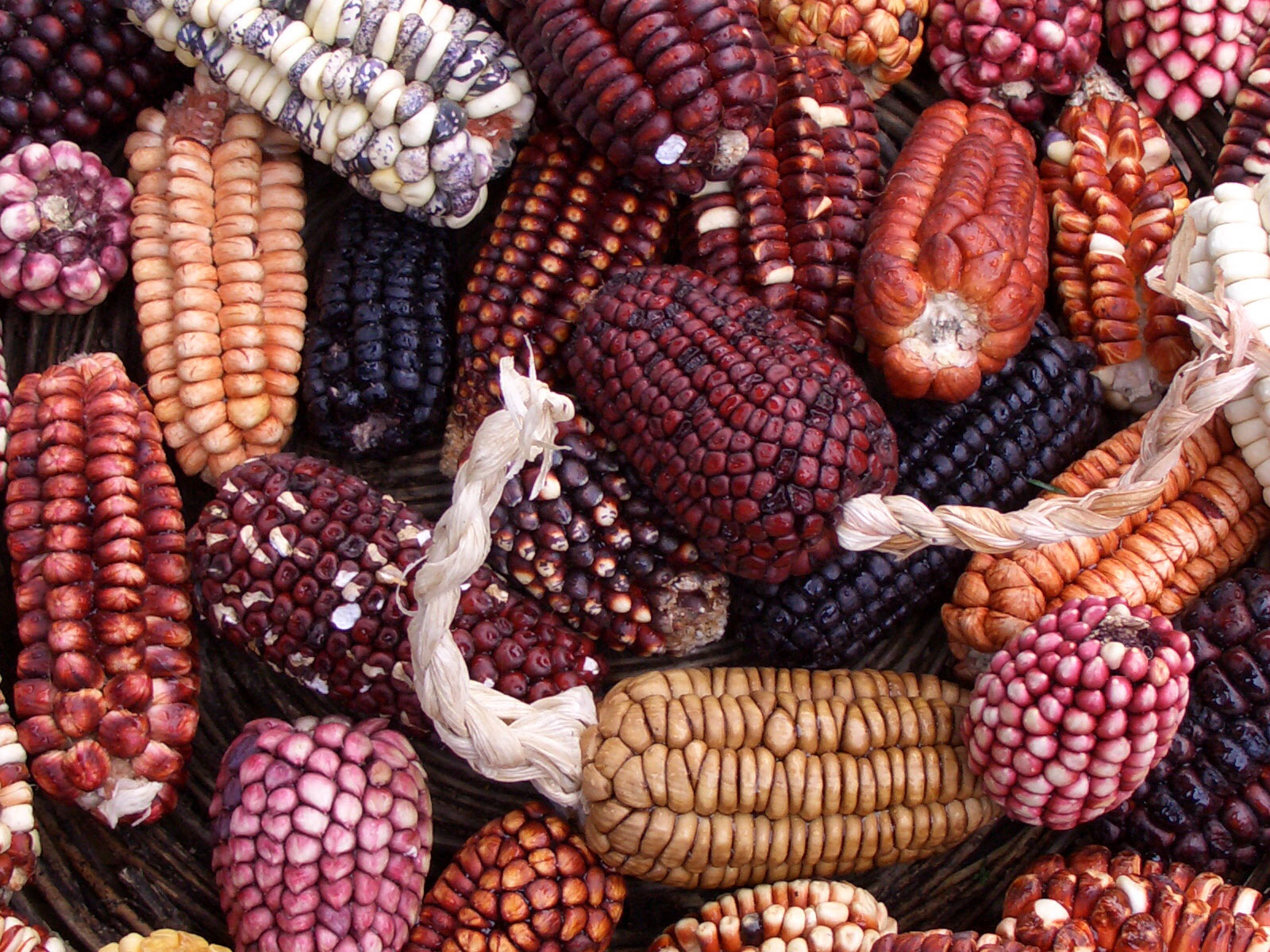
Varieties of maize grown in Peru. Photo by Jenny Mealing (flickr, Creative Commons Attribution 2.0 Generic license).
How is maize used?
Maize is grown primarily for its kernels, which are high in starch, but also contain fiber, oil, and protein. Among its many uses, whole or milled maize grain (for example, corn flour and corn meal) is a food source for people and livestock, such as chickens, cows, and hogs.
Corn oil is used in processed foods and personal care products, like shampoo and cosmetics. Cornstarch is used as a binding and thickening agent and is found in a wide variety of processed foods and other products. Cornstarch can also be broken down into sugars to make sweeteners like corn syrup and high fructose corn syrup (HFCS). Maize starch converted to sugars can be fermented to make ethanol-based biofuels or alcoholic beverages like bourbon. The major components of the maize kernel have many other industrial uses and appear in surprising products, like disposable diapers, fireworks, and paints.
Maize stover (the stalk and leaves) may also be collected for a variety of uses, including livestock feed and kitty litter. Stover is also of interest as a source of biomass for potential cellulosic ethanol biofuel production.
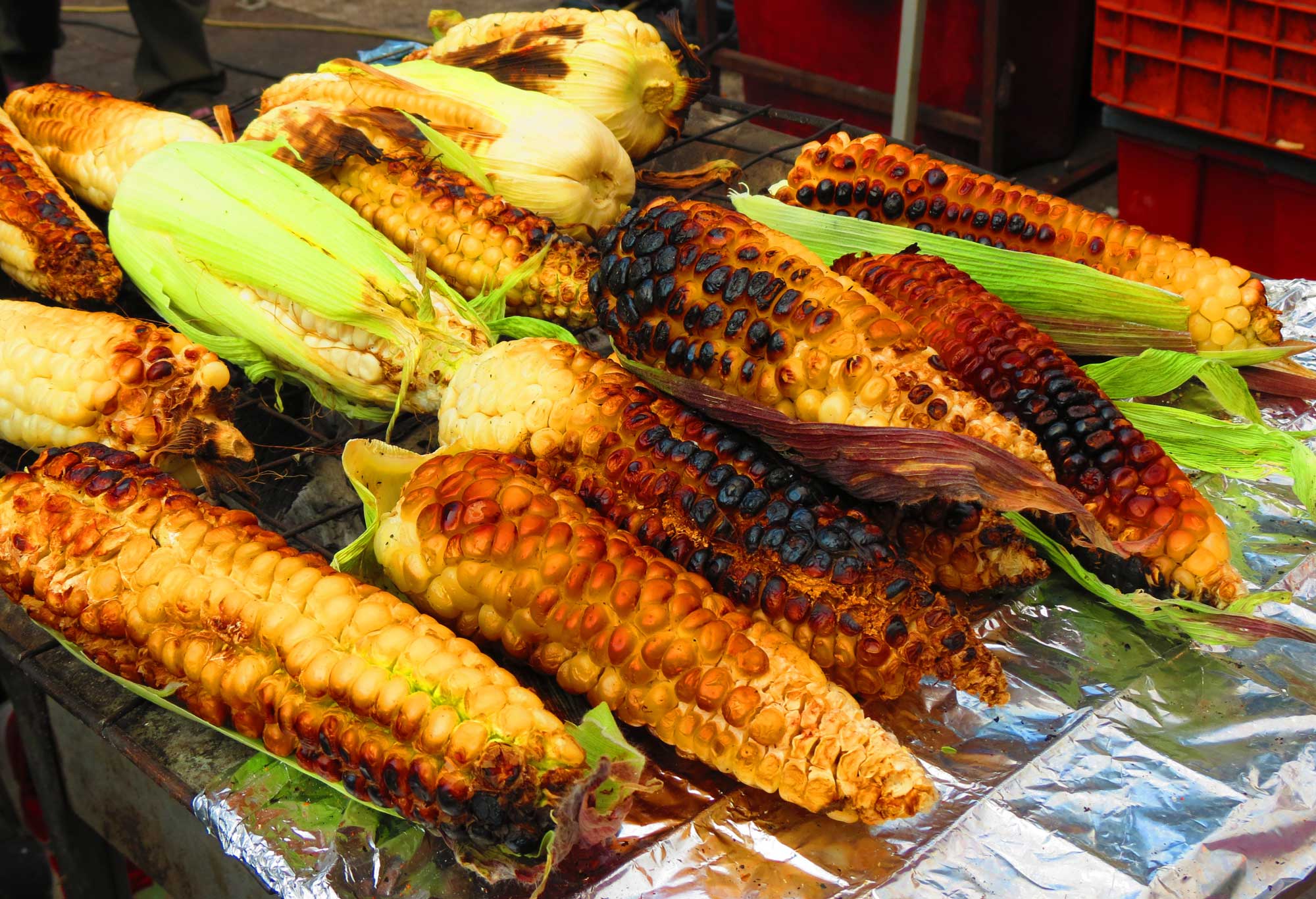
Elotes (grilled corn on the cob with seasoning) in Mexico City, Mexico. Photo by Luis Alvaz (Wikimedia Commons, Creative Commons Attribution-ShareAlike 4.0 International license, image cropped and resized).
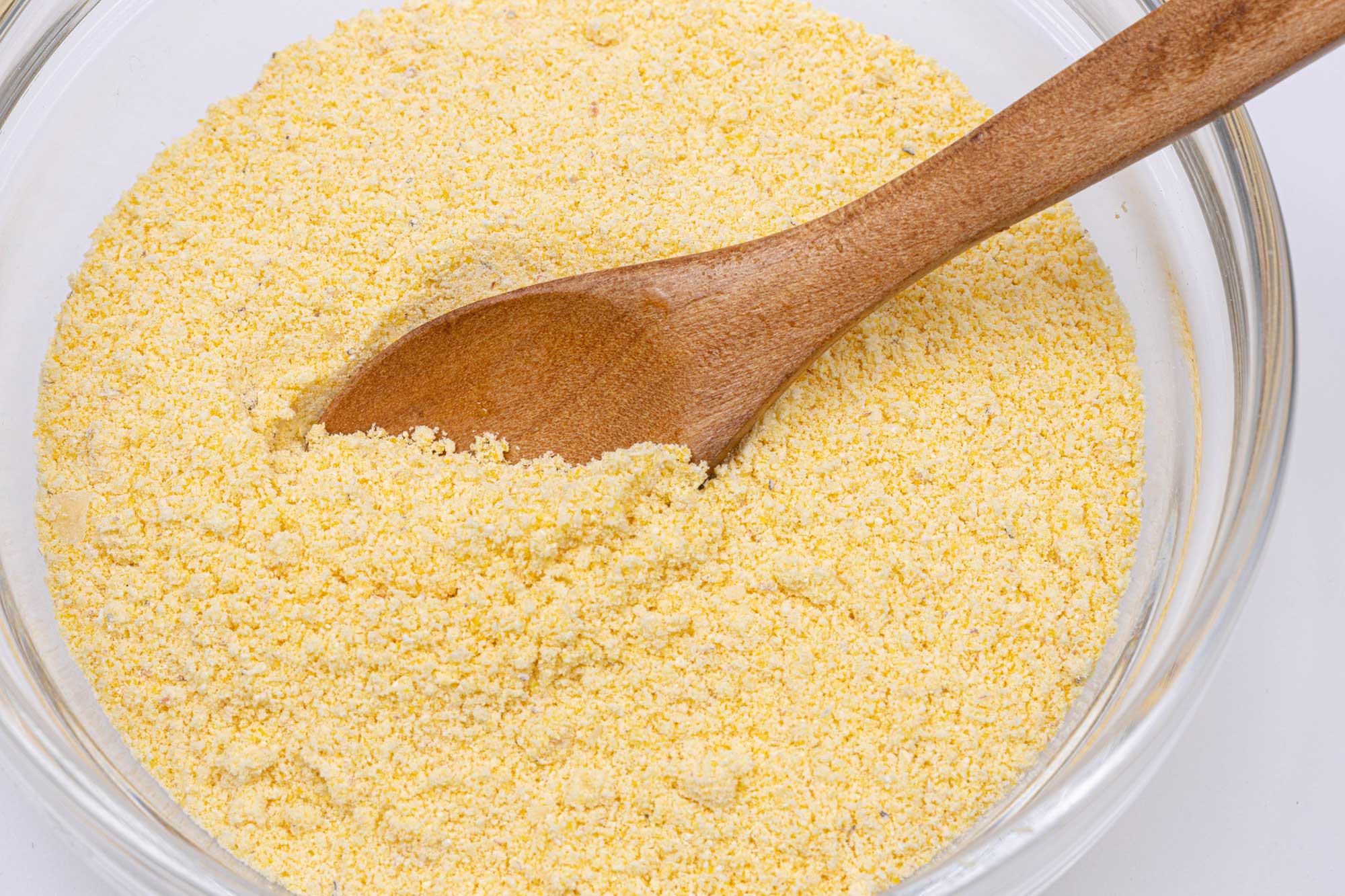
Corn flour. Photo by Marco Verch Professional Photographer (flickr, Creative Commons Attribution 2.0 Generic license, image resized).
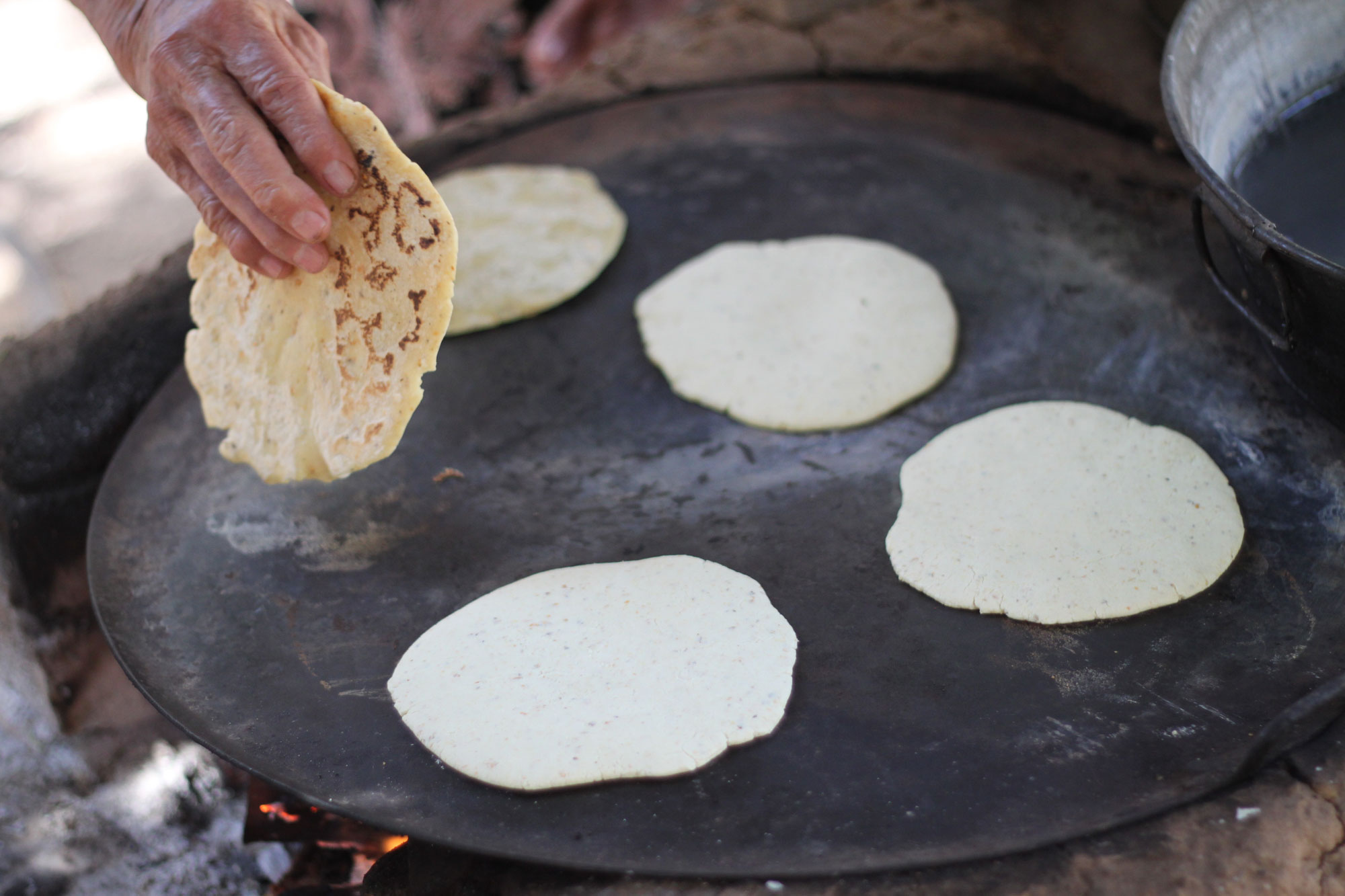
A person making tortillas in Urique, Mexico. One of the traditional uses of maize is to make masa, a type of dough used in tortilla-making. Photo by Eli Duke (flickr, Creative Commons Attribution-ShareAlike 2.0 Generic license, image resized).
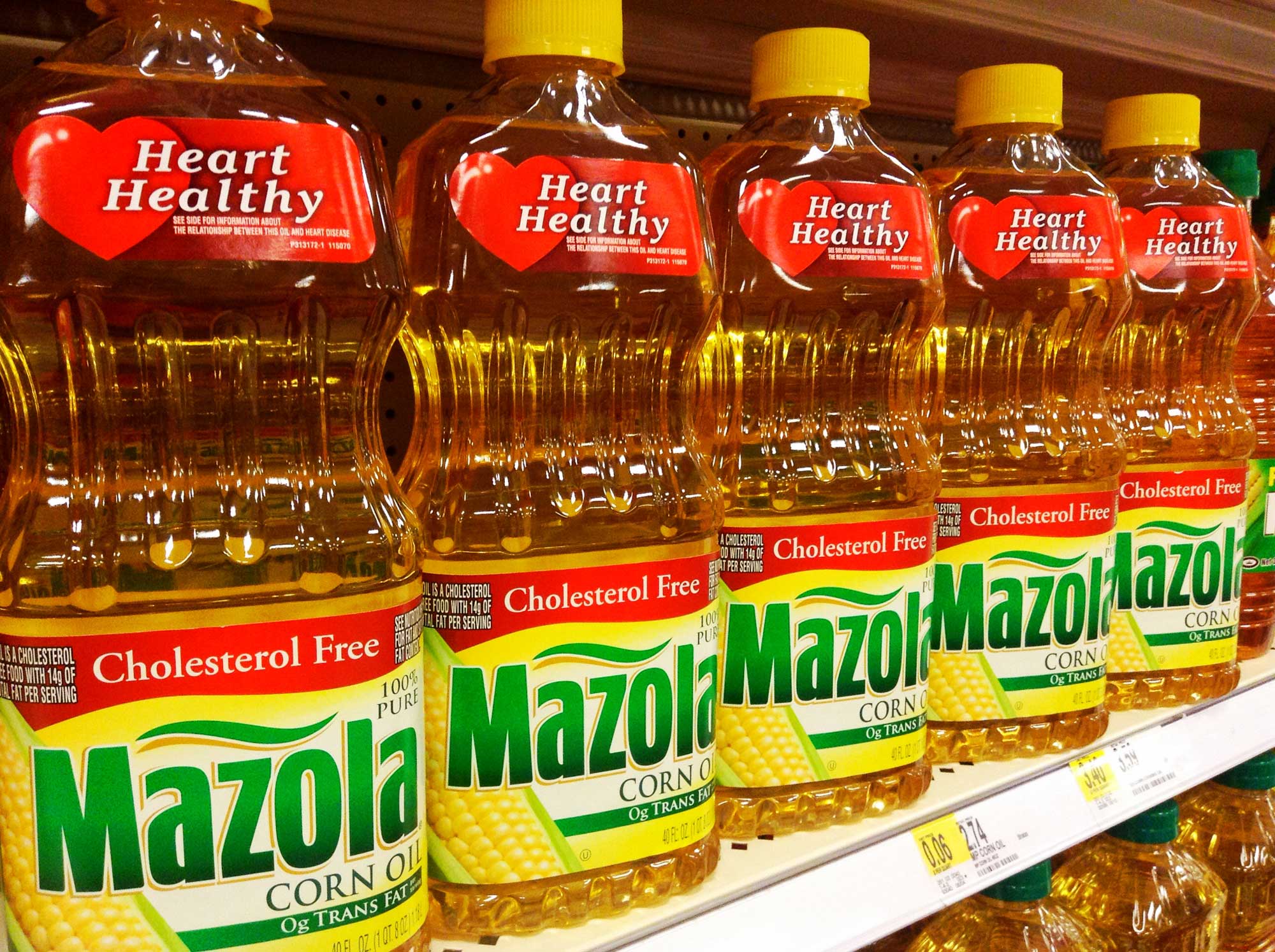
Bottles of corn oil on a shelf at a store. Photo by Mike Mozart (flickr, Creative Commons Attribution 2.0 Generic license, image resized).
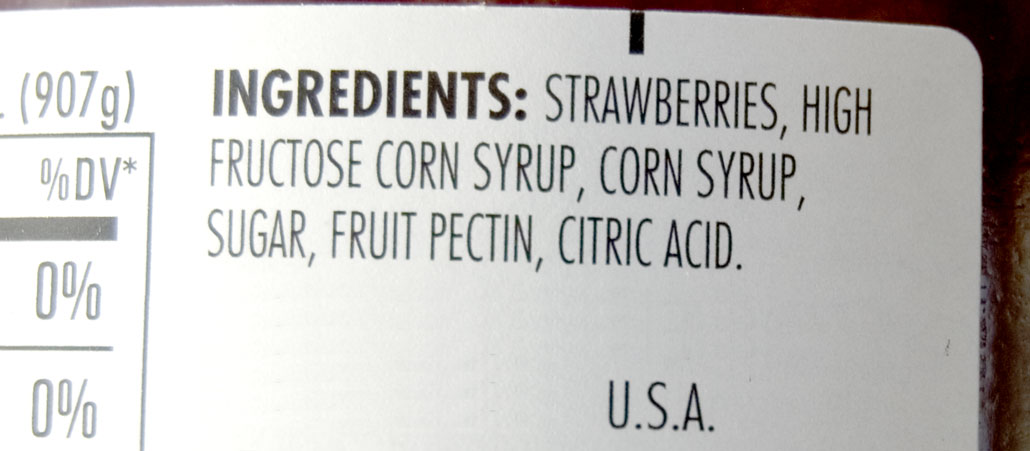
Nutrition label for strawberry jam with three types of sweeteners: HFCS, corn syrup, and sugar. Photo by Food Thinkers (flickr, Creative Commons Attribution-NonCommercial-ShareAlike 2.0 Generic license, image cropped).

Original caption: "An E85 (85% ethanol) gas pump at a fueling station in Inver Grove Heights, Minnesota." Photo by Tony Webster (flickr, Creative Commons Attribution 2.0 Generic license, image resized).
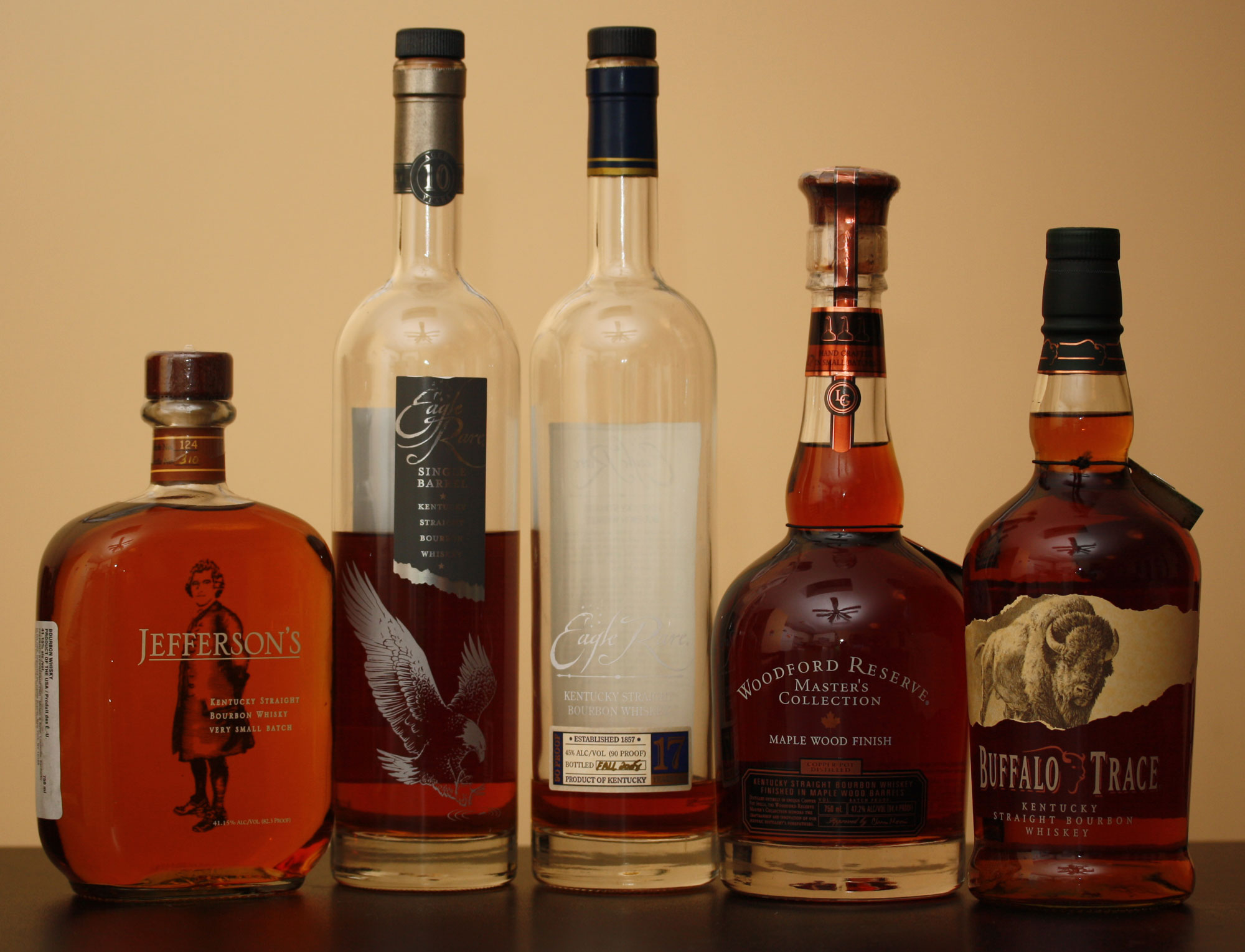
Bottles of bourbon. Photo by Danielle Scott (flickr, Creative Commons Attribution-ShareAlike 2.0 Generic license, image cropped and resized).
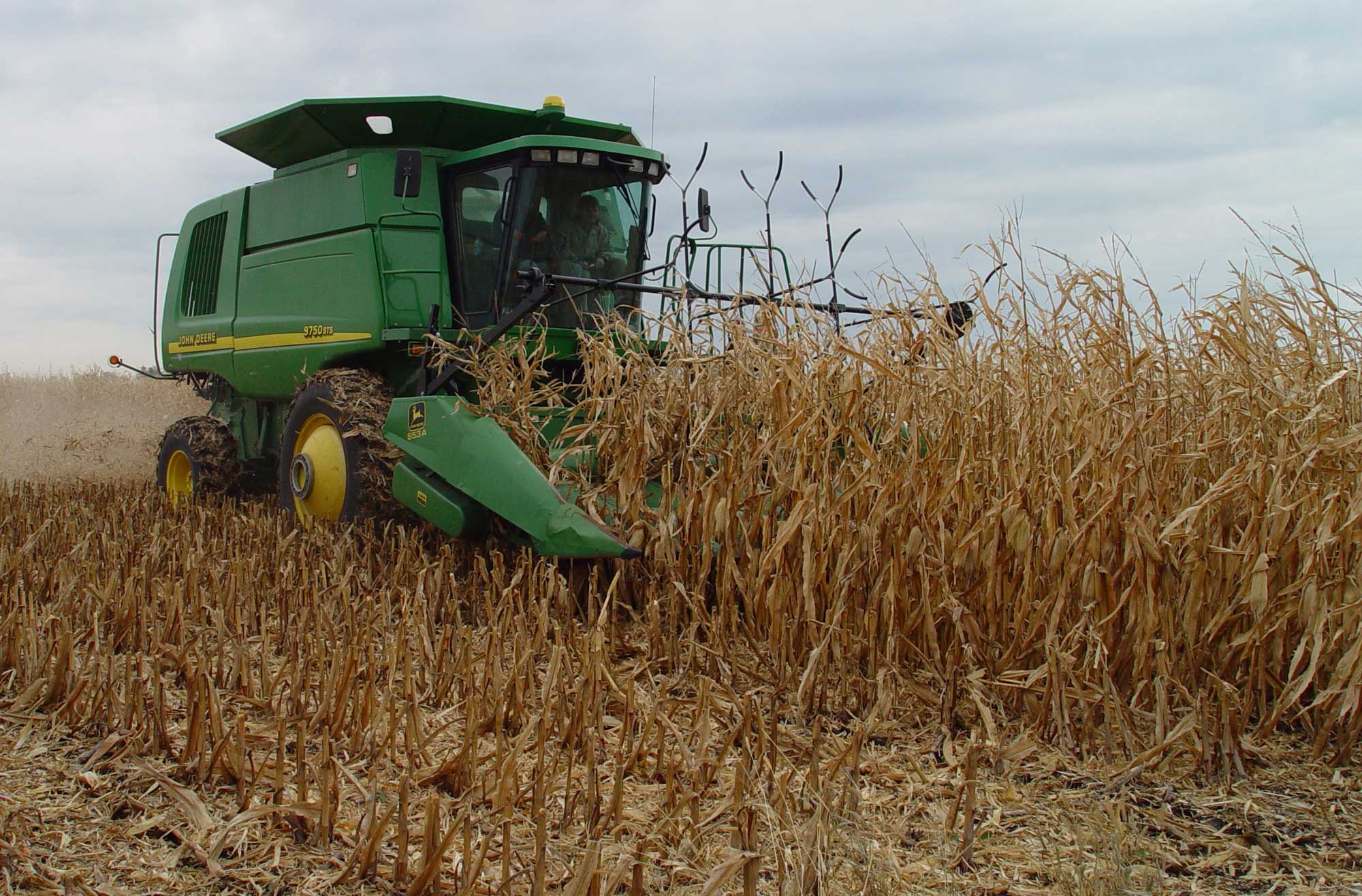
Maize stover harvest. Photo courtesy of Idaho National Laboratory (INL) Bioenergy Program (flickr, Creative Commons Attribution 2.0 Generic license, image cropped and resized).
How is maize grown?
Like other grass grain crops, maize is grown in cultivated fields. Maize is grown from seed as an annual crop, meaning that it reaches maturity in one growing season. Maize is primarily a cross-pollinated plant, and pollination and fertilization are important to grain yields. Most commercially produced maize comes from hybrid and genetically engineered seeds. In order to maintain the consistency of the crop and the vigor of the plants in commercial operations, a fresh batch of hybrid seeds must be purchased for each new crop.
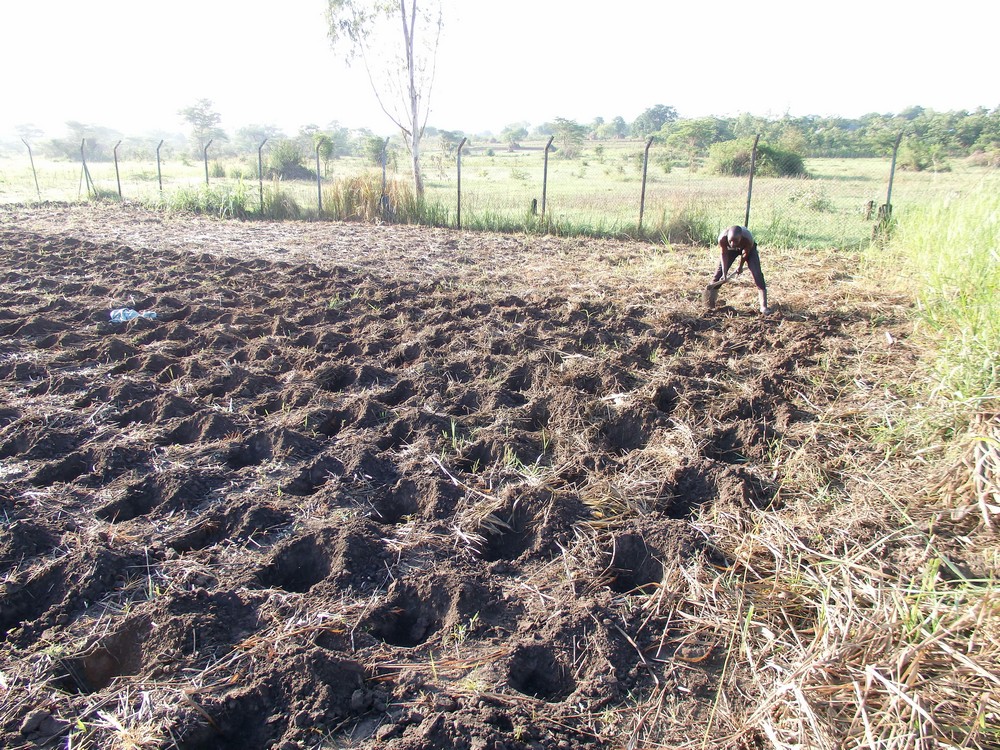
A person hand-digging holes to plant maize, Uganda, 2017. Photo by Munu-Muti (Wikimedia Commons, Creative Commons Attribution-ShareAlike 4.0 International license).
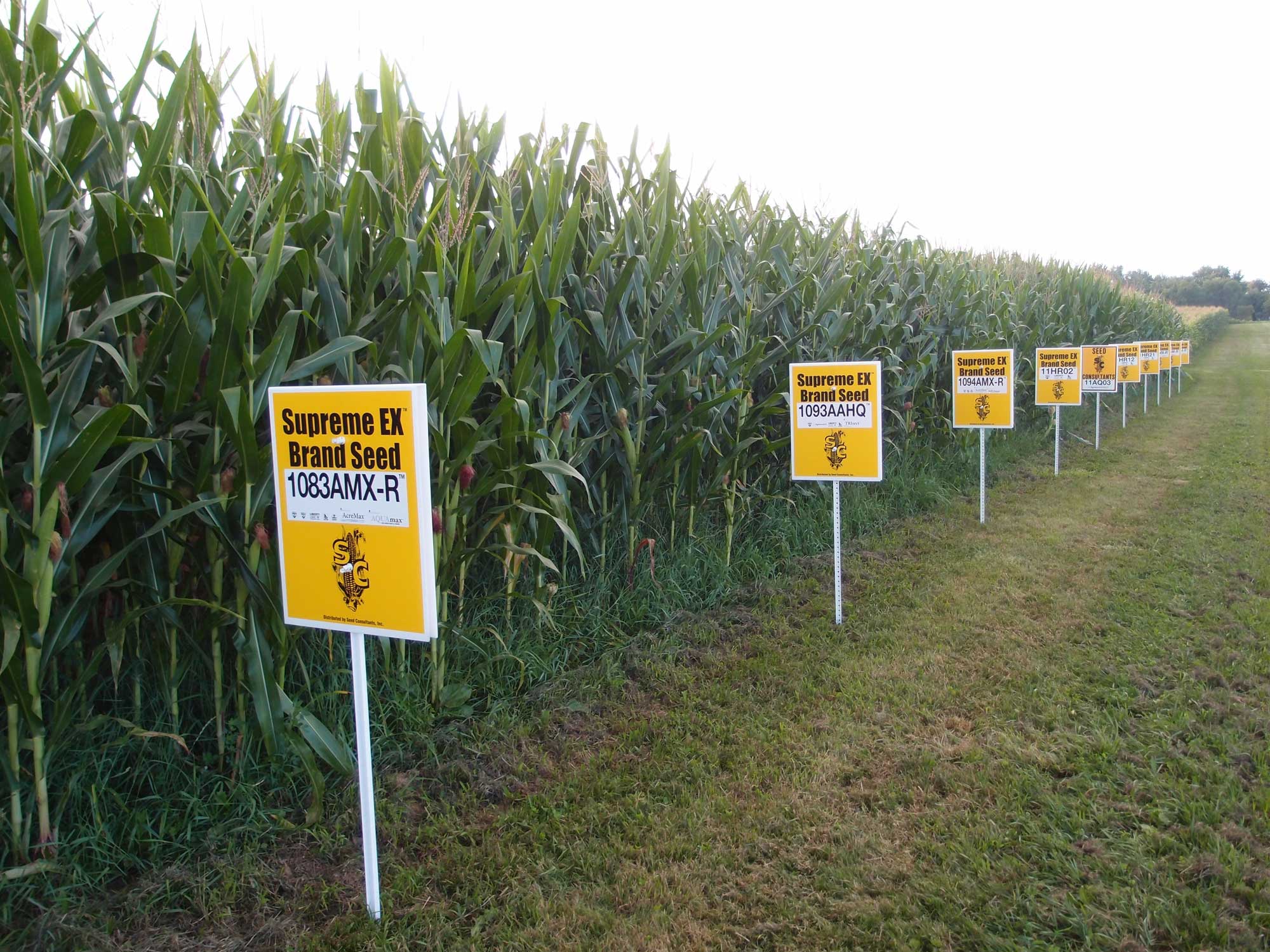
Hybrid maize that has also been genetically engineered, Ohio, U.S.A., 2013. Photo by leyink (flickr, Creative Commons Attribution 2.0 Generic license, image resized).
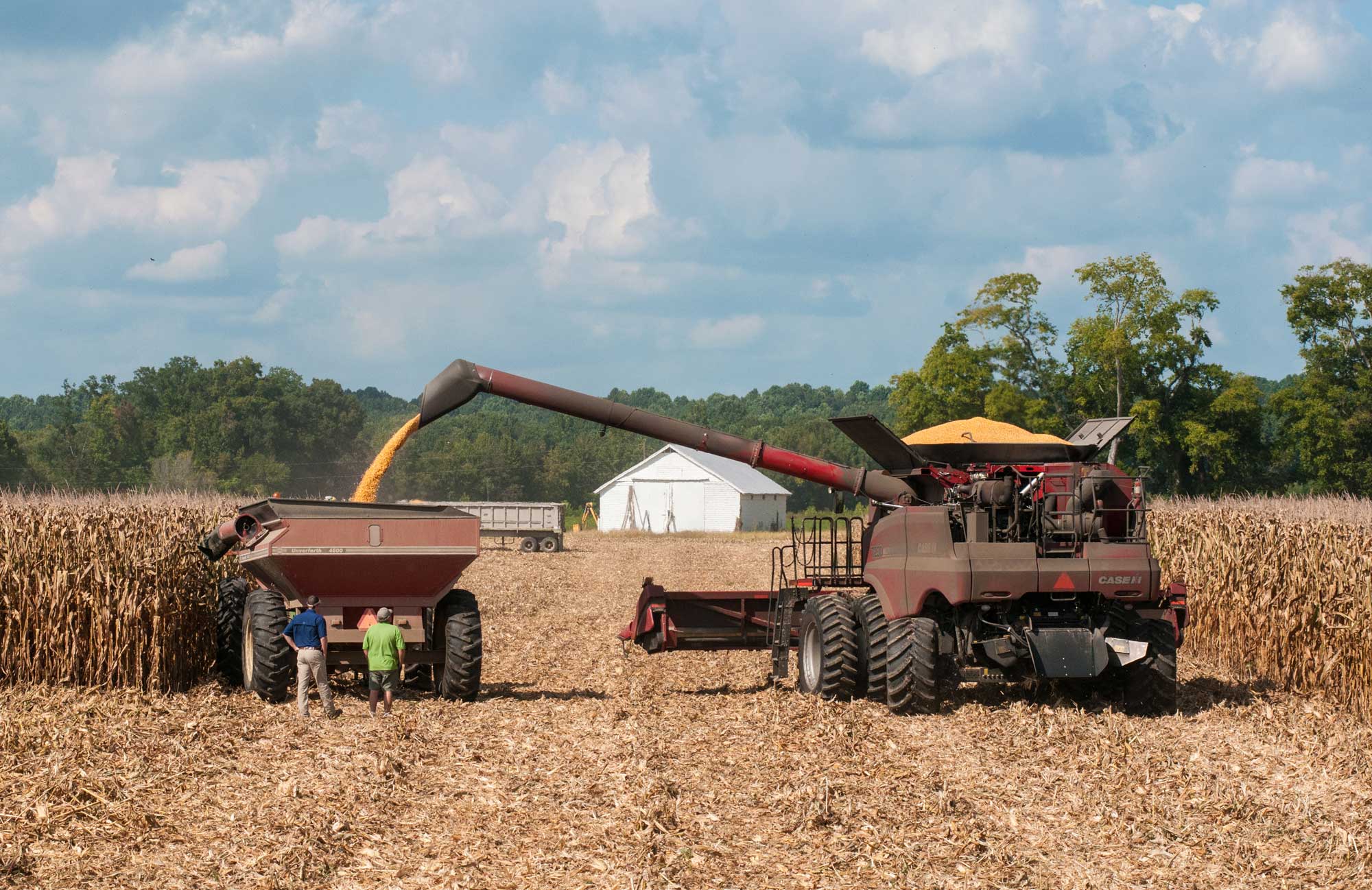
Maize being harvested in Virginia, U.S.A., 2013. USDA photo by Lance Cheung (flickr, public domain).
Where is maize grown?
Maize can be grown in large parts of the temperate zone because it is an annual crop that does not require an extremely long growing season. Today, maize is the world's number two commodity crop, after sugarcane. The top producers of maize are the United States and China, followed by Brazil, Argentina, Ukraine, and India.
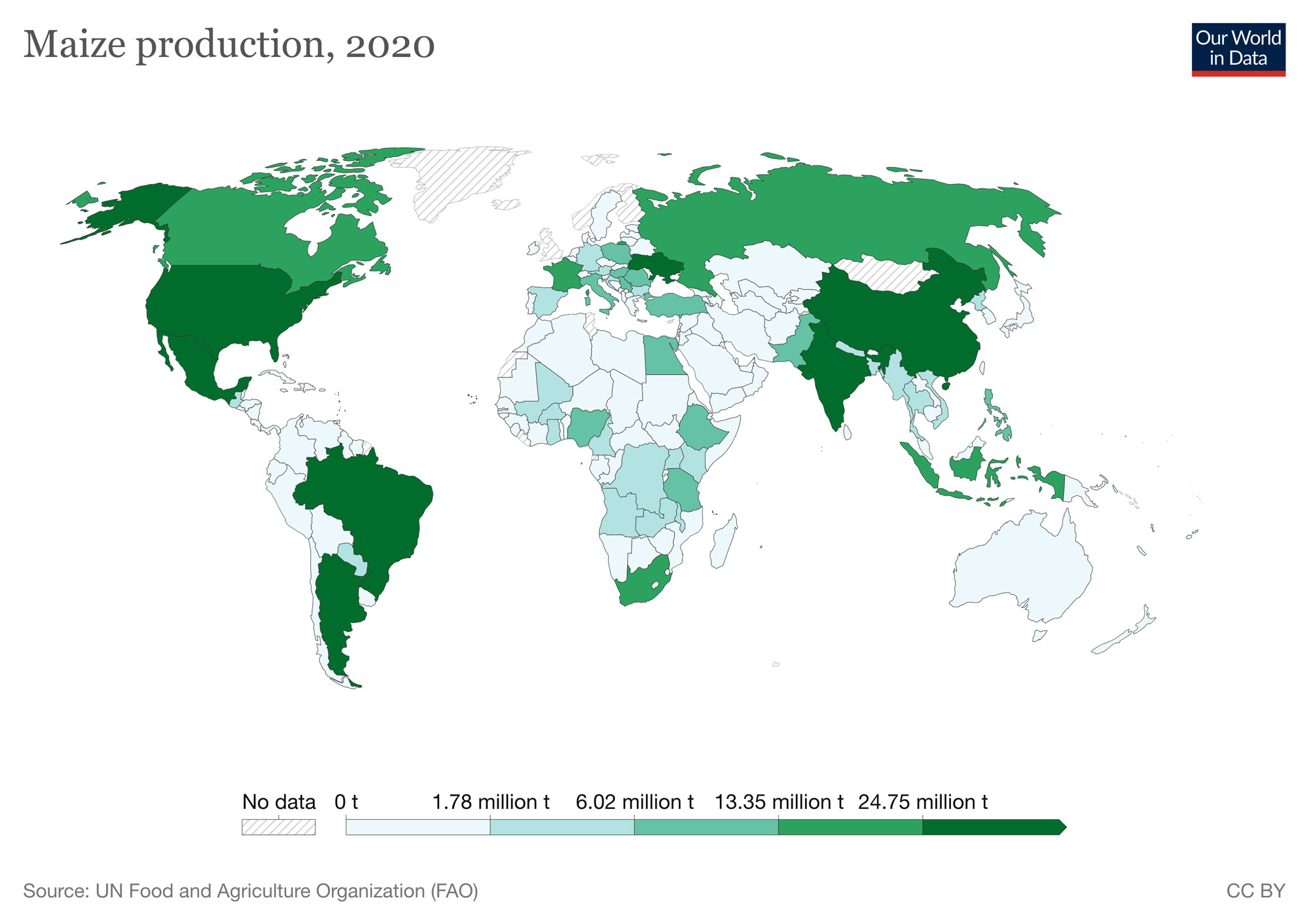
World map of maize production in 2020 by country. Map from Our World in Data (Creative Commons Attribution 4.0 International license, image resized).
Resources
Websites
Products [of maize] (Corn Refiners Association): https://corn.org/products/
Articles
Dean, S. 2013. The etymology of the word 'corn.' Bon Appétit, July 11, 2013. https://www.bonappetit.com/test-kitchen/ingredients/article/the-etymology-of-the-word-corn
Heuzé, V., G. Tran, and F. Lebas. 2019. Maize stover. Feedipedia, last updated on November 6, 2019. https://www.feedipedia.org/node/16072
Books
Levetin, P., and D. S. McMahon. 2016. Plants and Society, 7th ed. McGraw Hill Education, New York.
Simpson, B. B., and M. C. Ogorzaly. 2001. Economic botany, plants in our world, 3rd ed. McGraw Hill Higher Education, New York, New York.
Stewart, Amy. 2013. The Drunken Botanist. Algonquin Books of Chapel Hill, Chapel Hill, North Carolina.
